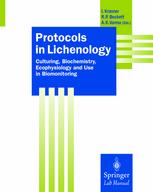

Most ebook files are in PDF format, so you can easily read them using various software such as Foxit Reader or directly on the Google Chrome browser.
Some ebook files are released by publishers in other formats such as .awz, .mobi, .epub, .fb2, etc. You may need to install specific software to read these formats on mobile/PC, such as Calibre.
Please read the tutorial at this link: https://ebookbell.com/faq
We offer FREE conversion to the popular formats you request; however, this may take some time. Therefore, right after payment, please email us, and we will try to provide the service as quickly as possible.
For some exceptional file formats or broken links (if any), please refrain from opening any disputes. Instead, email us first, and we will try to assist within a maximum of 6 hours.
EbookBell Team

5.0
20 reviewsAs an intricate association between a fungus and one or more green algae or cyanobacteria, lichens are one of the most successful examples of symbiosis. These fascinating organisms survive extreme desiccation and temperatures. They are adapted to a great variety of habitats, from coastal fog zones of deserts to intertidal zones, from plant leaves in tropical rain forests to the glacial moraines of the Himalayas, and they are dominant components of communities in circumpolar ecosystems. Possibly, because of their tendency to grow in nutrient-poor habitats, lichens are extremely efficient accumulators of atmospherically deposited pollutants, and are therefore widely used to monitor environmental pollution. The wide range of secondary products only found in lichens show pharmaceutically interesting fungicidal, antibacterial and antiviral properties. Lichens are extremely difficult to culture, grow very slowly, and their secondary metabolites very often complicate the analyses of other compounds. As a result, they require special techniques. This manual provides well-tested protocols, including tissue culture protocols and methods for studying lichen ultrastructure, (eco)physiology, primary and secondary compounds, and nucleic acids. Protocols for using lichens to monitor environmental pollution and to document lichen biodiversity are also provided. Special terms used in lichenology are explained in a glossary.